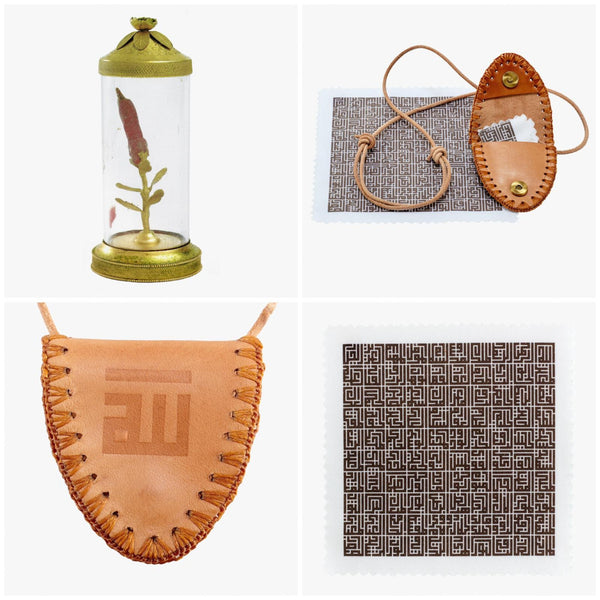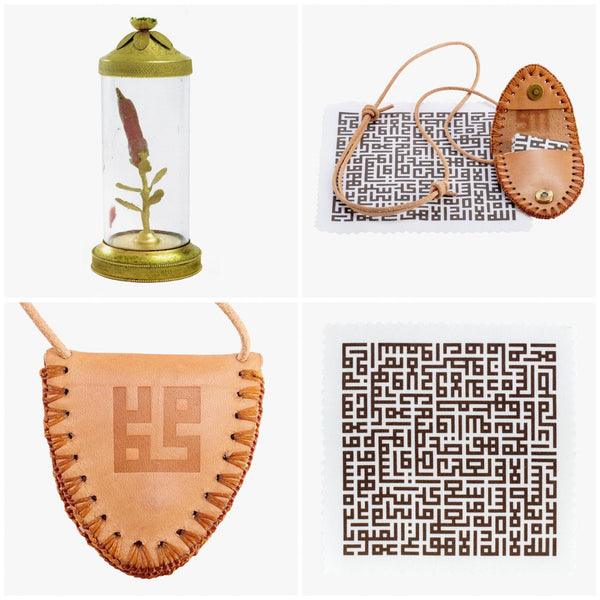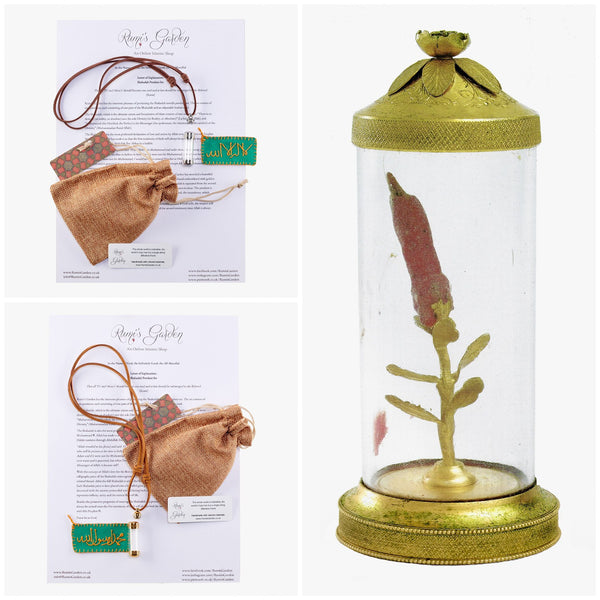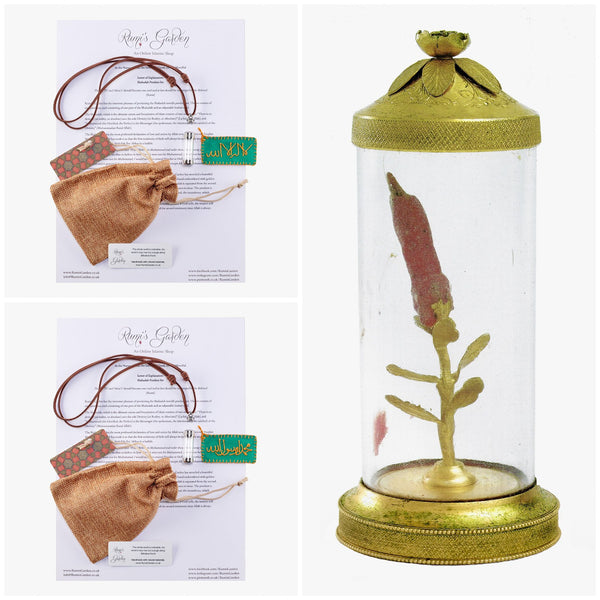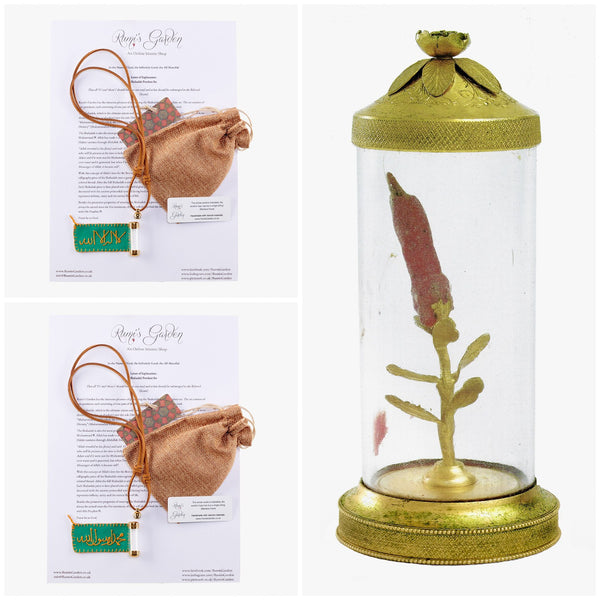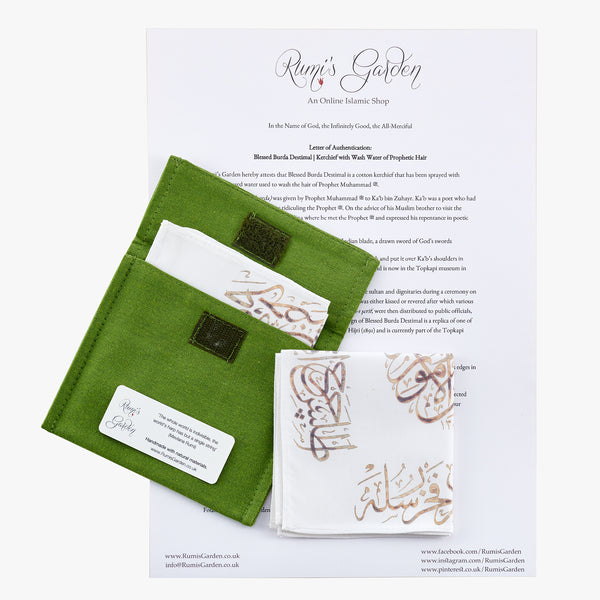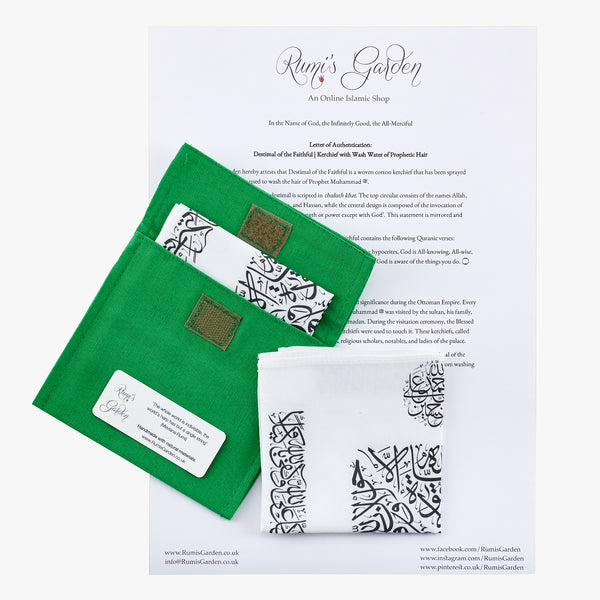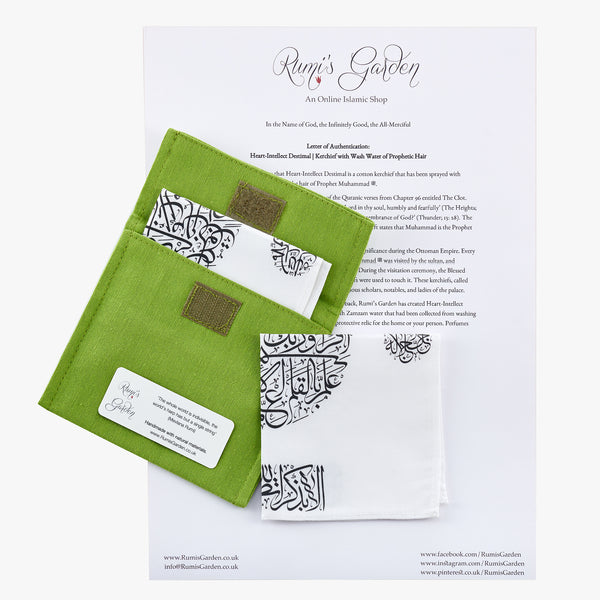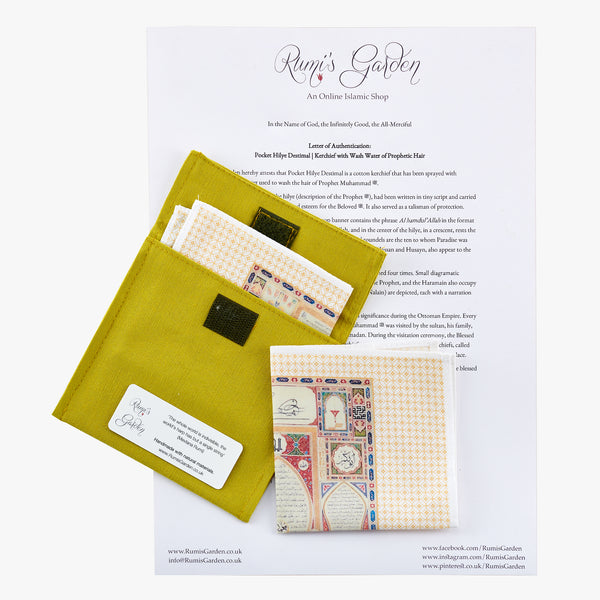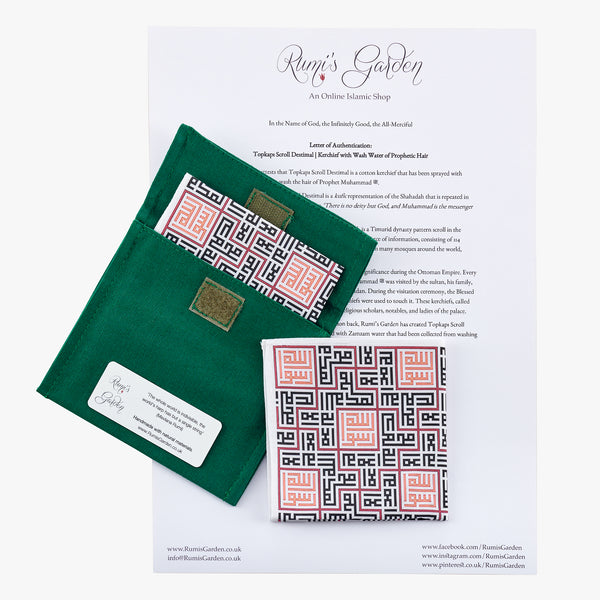Wash Water from the Hair of Prophet Muhammad
Handcrafted items that have been sprayed with Zamzam water used to wash the hair of Prophet Muhammad ﷺ. The washing and oiling of the Prophetic hair occurs to keep the hair stands healthy. The Prophetic hair wash water is then often distributed for its healing and protective properties.
☾☾☾☾☾
What is the significance of the hair (شعرات النبي محمد ,موے مقدس) and hair wash water of Prophet Muhammad?
Video: Footage showing the exhibition of the hair of Prophet Muhammad ﷺ at the Hazratbal Shrine in Kashmir in 1964.
There is a long documented history of venerating the blessed Prophetic relics in Islam which come in two broad categories: His blessed physical remains such as his hairs, nails, sweat, beard, & teeth, and, objects that personally belonged to him, such as his burda (coat), sandals, swords, and bow. All these sacred Prophetic relics, and by extension, the relics of the awliya, have three forms of power that can be discerned. Firstly, there is the beneficent influence present in the relic itself; secondly, there is a psychic energy coming from the persons of faith as a result of their vigorous and prolonged adoration of the relic; thirdly there is the grace (baraka) sent down by the Prophet ﷺ, and from Heaven itself, independent of the two preceding factors but occasionally combining with them. However, these powers within the relics do not work blindly; their positive or negative manifestations depend on the nature of the person who benefits from or experiences them, as well as other possibilities.
The hair of Prophet Muhammad ﷺ has always been one of the most valuable relics starting from early Islam. The hadith collection of Bukhari and Muslim reports that the Final Messenger of Allah ﷺ shaved his head after his travel to Mecca. Upon doing this, he instructed Abu Talha al-Ansari to allocate one share of the hairs to each of the male Companions of the Prophet and instructed Abu Talha’s wife, Rumaysa bint Milhan, to distribute two shares to the women. Likewise, Ahmad ibn Hanbal reported that no hair had fallen from the head of Prophet Muhammad that was not collected by his followers.
The hadith literature also indicates that the Companions and Ahl al-Bayt would dip the blessed hair in water to enable a cure for the evil eye or some other disease. One example is of Thumama who related that Anas said, ‘Umm Sulaym used to spread a leather mat for the Prophet, peace be upon him, and he would have a midday nap on that mat at her home’. He said, ‘When he slept, [Umm Sulaym] would collect some of his sweat and hair and put it in a bottle and added it to perfume (sukk). [Thumama] said, ‘When Anas ibn Malik was dying, he told me to put some of that perfume in his embalming scent (hanut), and that was done’ (Sahih Bukhari; 82: 5925).
Another hadith reports that Israil related that Uthman bin Abdullah bin Mawhab said, ‘My people sent me with a cup of water to Umm Salama—Israill put three fingers together indicating the size—for the container in which was one of the hairs of the Prophet ﷺ. When someone was afflicted by the Evil Eye or some other affliction, he would send a vessel [containing water] to [Umm Salama]. I looked in the bell-like vessel and saw some red hairs’ (Sahih Bukhari; 80: 5557).
In a commentary on the above hadith, Ibn Hajar al-Asqalani says: If any person suffered from the evil eye or some other disease, he would send a vessel containing water to Umm Salama and she would dip the Prophet’s hair into it and would return the vessel to its owner, and he would either drink the water or would wash himself with it seeking a cure [from God] through it and he would derive its baraka.
Video: Footage showing the maintenance of the hair of Prophet Muhammad ﷺ after washing in the UAE.
Within Islamic history, it is known that the great companion, Khalid ibn al-Walid, was buried in Homs, Syria, with the hair of his beloved Prophet ﷺ, which he also wore pinned to his headgear as he conquered Damascus. The Mamluk amir, Sayf al-Din Manjak al-Yusuf, who was well-known for his endowments during the 14th century and who built a teaching college, also possessed a strand of the Prophetic hair until his death.
Indeed, several colleges, mosques, and Sufi lodges were associated with the Prophet’s hair both in the past and to this day. During the 15th century, the scholar Muhammad bin al-Zaman met a wali during his travels who gave him a strand of hair belonging to the Prophet Muhammad ﷺ. It was stored in a teaching college that Ibn al-Zaman founded in Cairo, Egypt.
Ahmed Teymur Pasha (b. 1871- d. 1930) makes a list of the cities of the Muslim world where the Prophet’s beard was kept at the time. He mentions that there were 43 hairs among the sacred relics kept in Topkapi Palace during the reign of Sultan Mehmed V and that the sultan sent twenty-four of these to various Muslim cities.
Today in Istanbul there are 422 strands of hair belonging to Prophet Muhammad ﷺ. All hairs have been recorded by the Directorate of Religious Affairs. As during the Ottoman period, some of these are kept in the Mukaddes Emanetler Dairesi, while others are in mosques, Sufi dargahs, foundations, and private houses. Mention must also be made of the Prophetic beard displayed in the Topkapi palace in Istanbul, the hairs located in The Hazratbal Shrine in Srinagar, and the Alaettin Mosque in Konya, all of which can be seen to this day.

Image: Moi-e-Muqqadas (The Sacred Hair) in Hazratbal Shrine

